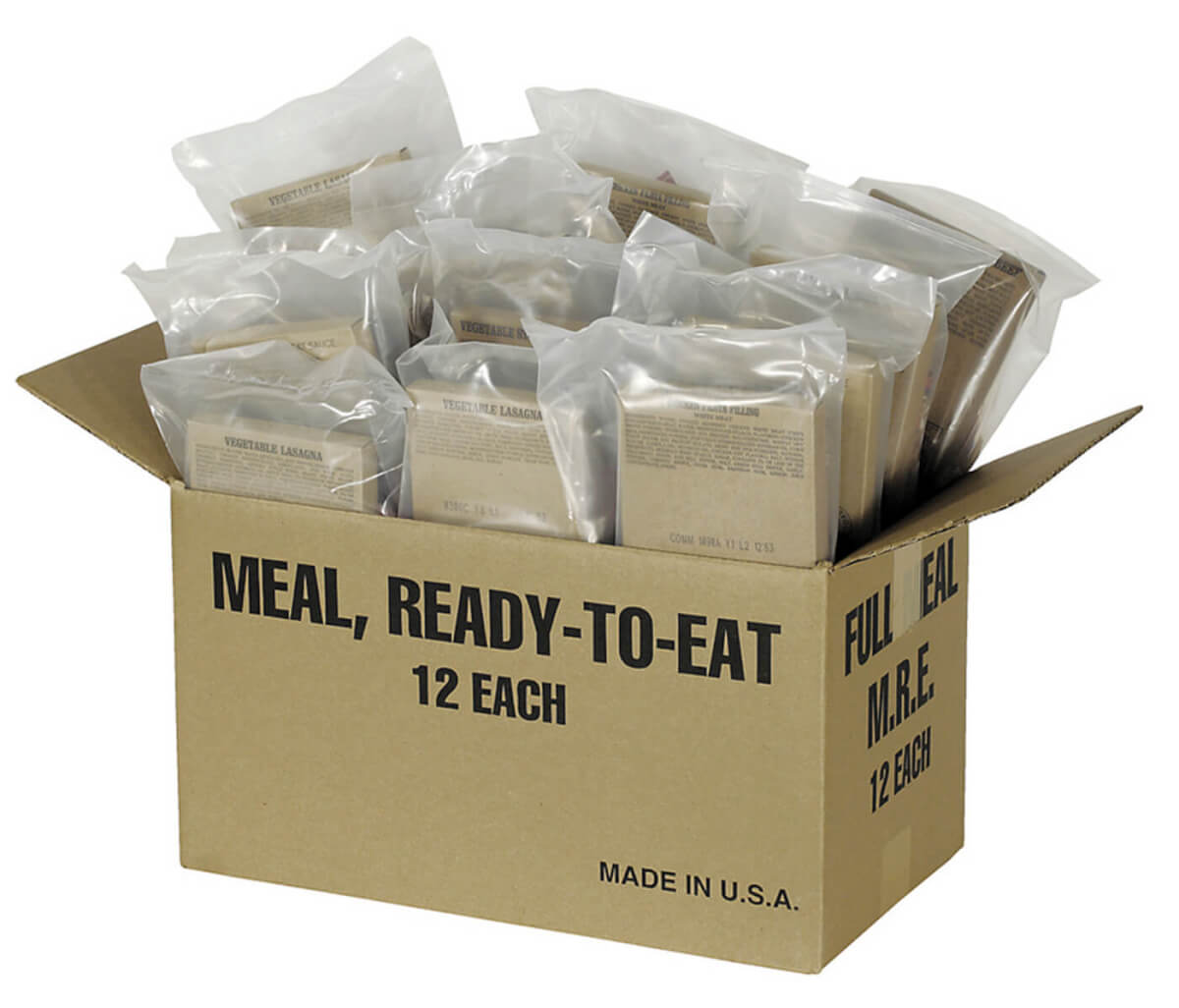Fact: food is a number-one priority for survival. Whether you’re displaced by a hurricane or bugging out at home, you need to eat.
While you might think you don’t need to stock your pantry because you have excellent hunting and foraging skills, those will only get you so far. In the event of a serious situation that involves a shortage of food, MREs can be your best friend.
These meals need no rehydration; just open and eat. You can warm the meals up by using an MRE heater, sitting them on your car exhaust manifold, submerging them in boiling water or cooking them traditionally.
- The meals keep for 5-7 years.
- The boxes consist of lunch and dinner items.
- Each meal contains an average of 1250 calories and is comprised of 13% protein, 36% percent fat, 51% carbs and 33% of daily-recommended vitamins and minerals.
HISTORY
The Meal, Ready-To-Eat (MRE) was initially developed during the Revolutionary War to ensure that soldiers in the field had enough rations to survive while fighting the enemy. MREs have evolved since that time to include up to a three-course meal so you’ll never go hungry. Many families keep MREs not only in their survival pantries, but also under the seats of their cars, in their hunting vehicles, and at their pre-planned bugout locations.
Contrary to popular belief, MREs cannot be stored indefinitely, although they do last a long time. The average shelf life of a Major Surplus MRE “would be five to seven years, depending on the temperature stored,” says Steve Adkisson, owner of Major Surplus & Survival. You can nail down the length of time you’ll be able to keep yours in your pantry by using the following guidelines provided by Major Surplus, which were determined by military and public industry food scientists:
Keep in mind that time and temperature has a cumulative effect, Major Surplus cautions. Storage at 100 degrees Fahrenheit for 11 months but then moved to 70 degrees would lose half of the 70-degree shelf life due to its time in such hot weather.

To check out all of the MRE options available from Major Surplus & Survival, visit the company’s website at www.majorsurplus.com.
KNOW YOUR NEEDS
“The average family of four should keep a three-month supply of food,” advises Steve Adkisson, owner of Major Surplus & Survival.
“Everything depends on their budget,” says Adkisson. “A family of four that eats three meals a day would require one full case of 12 MREs for one day’s worth of meals.”
That family would be eating quite well, Adkisson suggests, noting that they’d be consuming approximately 2,000 calories per day, per person.
“This would be 90 cases of 12 full meals to equal a three-month supply for four people. “Our best-selling MRE product is the Deluxe MRE, and we also offer vegetarian and kosher meals,” Adkisson adds.
“No preparation, no cooking, no rehydration,” he says. “Just heat and eat. It may also be eaten cold as well.”
“The average family of four should keep a three-month supply of food.”
—Steve Adkisson
Deluxe Complete MRE: $69.95
- A variety of different lunch or dinner entrées (usually 3-4 of each entree)
- Assorted side dishes
- Assorted desserts and snacks
- Beverage powder
- Condiments
- Utensils
One-Year Supply: Food Packs/12 Complete Meals Per Case/2 Full Meals Per Day: $3,800
- Same contents as above
Six-month Supply: Food Packs/ 12 Complete Meals Per Case/2 Full Meals Per Day: $1,900
- Same contents as above
Three-month Supply: Food Packs/ 12 Complete Meals Per Case/2 Full Meals Per Day: $1,000
- Same contents as above
Editor’s Note: A version of this article first appeared in the July 2013 print issue of American Survival Guide.



